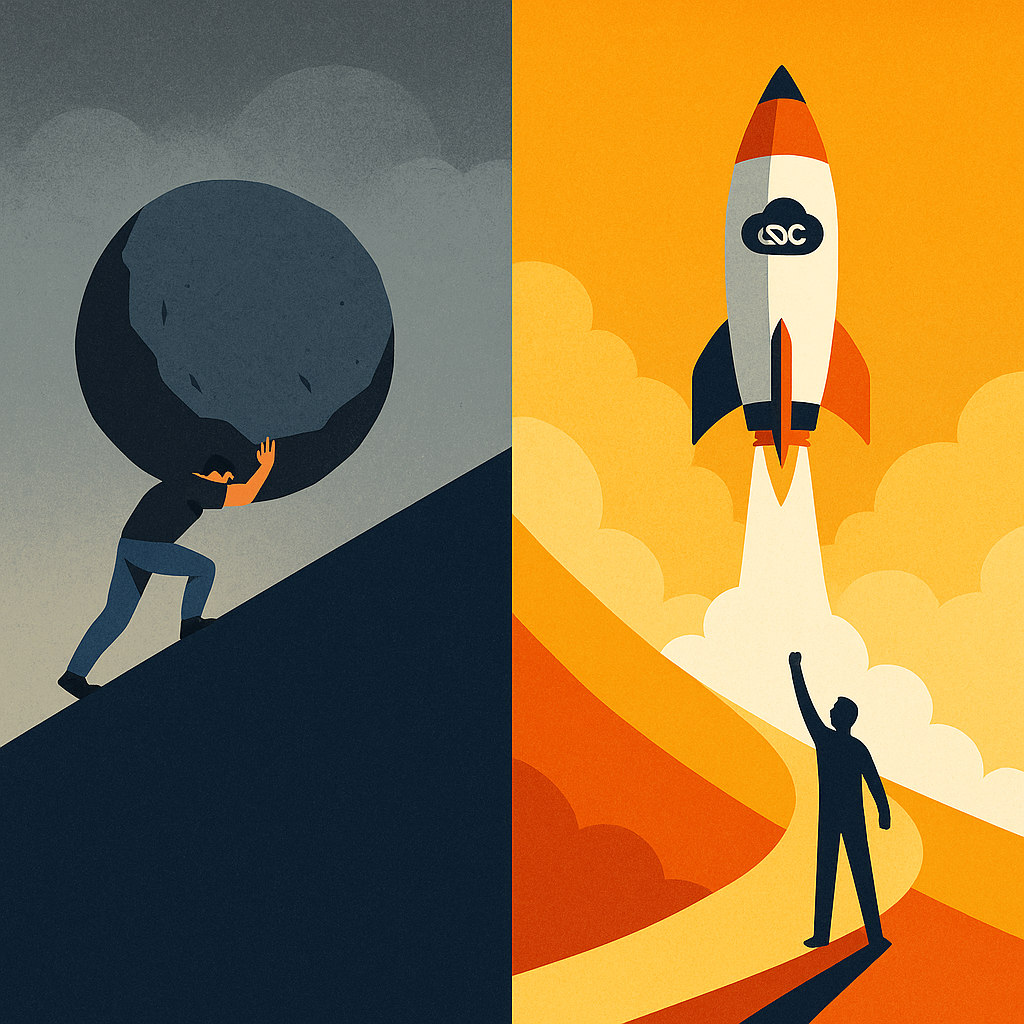
CLOUDNC FEATURED IN ENTREPRENEUR – 31 MARCH 2021
By Philip Stoten, Entrepreneur
I recently took part in The EMS (Eric Miscoll Show), a biweekly panel discussion exploring all things manufacturing, and perhaps more specifically, all things EMS. This particular episode explored the topic of autonomous manufacturing and had two visionary founders and CEOs who believe that the next revolution in manufacturing goes way beyond automation to autonomy.
Those panelists were Theo Saville of CloudNC and Yoav Zingher of Launchpad.build. Both startups are leveraging complex computational algorithms and AI to build autonomous manufacturing solutions, CloudNC for CNC parts and Launchpad for new products introduction, or NPI, in the electronics space.
From automation to autonomy
Much of the “revolutionary” talk over the last seven or so years has been around Industry 4.0 and the idea that connected factories using data and automation can substantially improve their performance, but to be frank, it has been way too much talk and not enough action. As Elvis Presly said, “a little less conversation, a little more action please!”
Theo Saville doesn’t believe that these concepts around automation and data are revolutionary. In his view, industrial revolutions come less frequently, typically every 100 years, are life-changing, and deliver performance benefits that are orders of magnitude. He suggests that much of these so-called “Industry 4.0” principles are merely tweaks or extensions of Industry 3.0, the “computer and digital” revolution that started decades ago and continues to deliver incremental benefit. This is evolution, not revolution.
Theo and his co-founder Chris Emery recognized that the CNC industry had sophisticated machines, capable of producing parts with incredible accuracy, but with a less than sophisticated method of programming and managing those machines. They saw a huge multi-billion-dollar industry underperforming and ripe for disruption. Their strategy was to start at machine autonomy, next to pull those machines together in an autonomous facility and eventually into an autonomous ecosystem of facilities around the world that deliver parts ast speed and at a substantially lower price. This ecosystem would use multiple copy and paste versions of their first autonomous facility.
Yoav Zingher’s desire to shake things up comes from an even more personal place. Before starting Lanuchpad.build, with his co-founders Ofer Ricklis and Bill Gross, Yoav ran an energy business in the UK. His team needed to get a piece of hardware, in this case, a smart-meter, manufactured, and was stunned by the level of complexity and difficulty he encountered getting his new product developed, manufactured and fulfilled. He knew there had to be a better way and when he sold his energy business, he decided to tackle the very problem he had encountered. Thus Launchpad.build was born with the ambition to create an autonomous platform that would take a CAD (computer-aided design) package and provide costing, build instructions and a complete supply chain solution quickly, simply and economically. Launchpad also decided to tackle the issue of manual electronic assembly at the same time and designed the ‘Digiline,’ their own adaptable automation module that would also be programmed directly from their front-end software.
When Theo and Yoav talk about autonomous manufacturing, they are not talking about the end of human operators; they are talking about autonomous decision-making, autonomous programming and autonomous supply chains. Take for example an autonomous system like an Amazon fulfillment facility. It is not lights-out with no human operators. In fact, it’s a vibrant and busy workspace where machines and humans are working in harmony. What makes it special is the software managing everything from order to final delivery, instructing both operators and automated systems like conveyors, packers and AGVs. Imagine a manufacturing ecosystem that operates like that!
The right time, the right place
Manufacturing autonomy is not just a good idea, it’s a timely idea, offering a chance to democratize both manufacturing and innovation. By creating autonomous and automated manufacturing solutions, it is possible to substantially reduce the labor cost element in manufacturing, allowing higher labor cost regions to bring manufacturing home. This is extremely timely given the desire of most nations to use manufacturing as part of their post-pandemic recovery strategy.
And the pandemic isn’t the only driver or acceleration. The Covid-19 pandemic came on the back of a bitter trade war between the US and China, creating a perfect storm of disruption that has led to a real desire to restore supply chains to make nations more resilient to future risk.
Both Theo and Yoav agree that autonomous and automated manufacturing solutions offer the only route to competitiveness for the US and for Western Europe, where the benefits of massive consumer markets are offset by high labor rates.
Consumers want to buy products made locally, but they don’t want to pay more for, or get less from, those products. Manufacturing autonomy might be just the solution the industry needs to create shorter, local supply chains that are more agile, resilient and sustainable.
Related: Future Of Manufacturing In 2021




